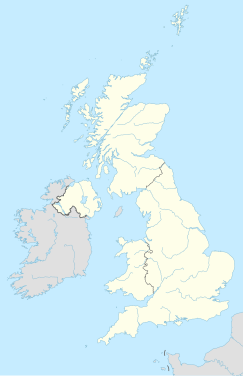Figsbury Ring
| Figsbury Ring | |
| Site of Special Scientific Interest | |
| Country | England |
|---|---|
| Region | South West |
| Ceremonial county | Wiltshire |
| City | Salisbury |
| Location | Firsdown |
| - coordinates | 51°6′11″N 1°43′51″W / 51.10306°N 1.73083°WCoordinates: 51°6′11″N 1°43′51″W / 51.10306°N 1.73083°W |
| Area | 11.2 ha (27.7 acres) |
| Notification | 1975 |
| Management | National Trust |
| Area of Search | Wiltshire |
| Interest | Biological |
| Website: PastScape | |
Figsbury Ring (grid reference SU188338) is an 11.2 hectare biological Site of Special Scientific Interest in Wiltshire, notified in 1975. It is owned and managed by the National Trust.
Within the wider SSSI mentioned above, the earthworks of Figsbury Ring are sub-circular and enclose 6.4 hectares of grassland on a chalk ridge to the north east of Salisbury, in the parish of Firsdown, Wiltshire at NGR SU188338. It is yet to be fully investigated.
Small portions of the site were excavated in 1924 by Ben and Maud Cunnington as it was their belief that the site was the remains of an Iron Age Hill fort. Superficially this description of an earthwork with exterior ditch would seem appropriate, however the presence of an enigmatic inner ditch has led many archaeologists to doubt this interpretation. This ditch is separated from the outer rampart by a berm of up to 30 metres in width and, to many, it seems likely that the site actually began as a late neolithic Henge.
A small geophysical survey was carried out by Anthony Clark and John Gator in 1981 to determine whether or not an earth bank was ever associated with the inner ditch. The results of this survey were inconclusive.
In 1982 the finds from the Cunningtons' excavations were then reappraised by Margaret Guido and Isobel Smith. Several artefacts, notably Grooved Ware and Beaker pottery, established that there had been occupation at the site much earlier than the period proposed by the Cunningtons.
A further reappraisal of the artefacts was carried out in 2003/04 by Philip Dunn, a student at Bournemouth University. This confirmed Guido and Smith's findings and went on to identify a number of flint artefacts that were diagnostic of Neolithic occupation at the site. Following on from this study a large scale geophysical survey was conducted which covered 46% of the interior using a Fluxgate Gradiometer. The results of this survey were, again, inconclusive although no evidence was detected for the existence of an inner bank. Traces of possible structures were detected and it was proposed that the site may have particularly early origins.
...
Wikipedia


